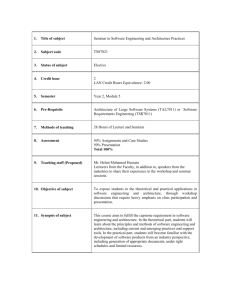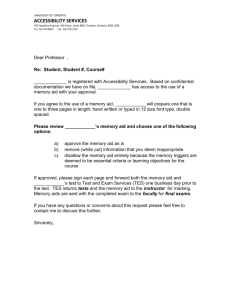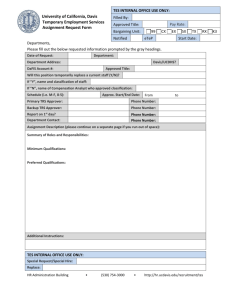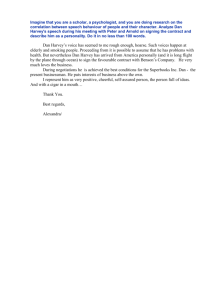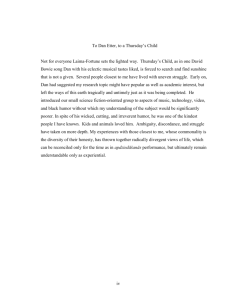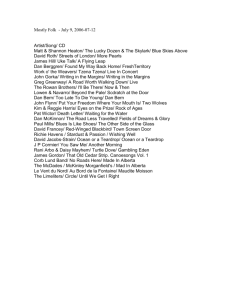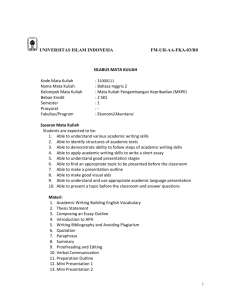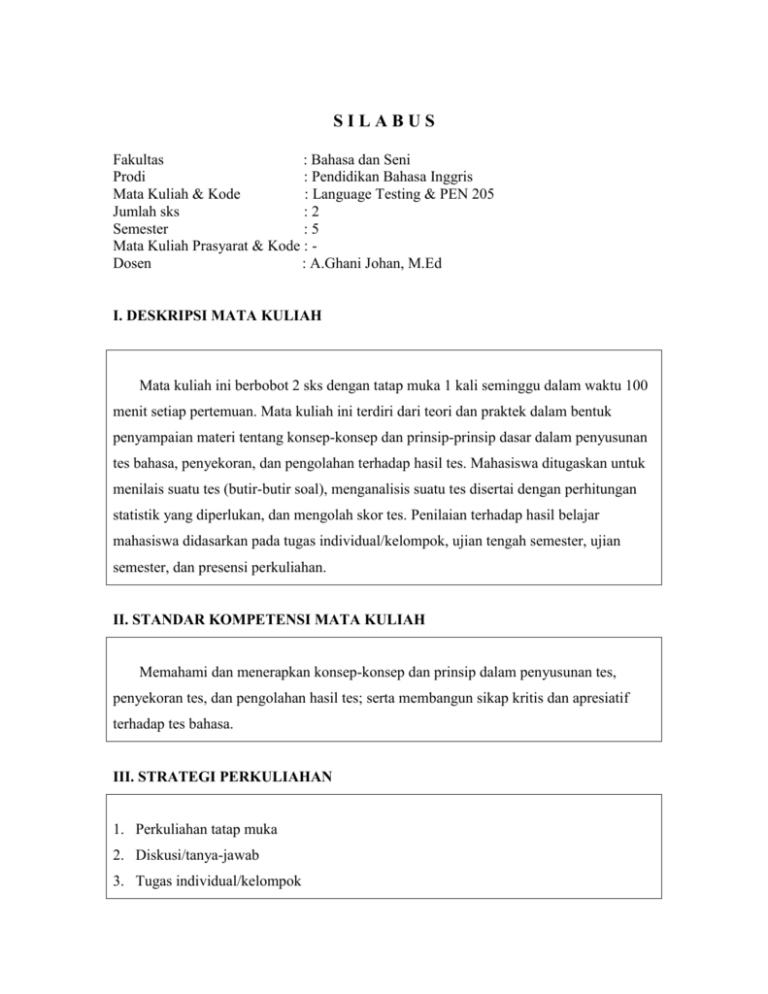
SILABUS
Fakultas
: Bahasa dan Seni
Prodi
: Pendidikan Bahasa Inggris
Mata Kuliah & Kode
: Language Testing & PEN 205
Jumlah sks
:2
Semester
:5
Mata Kuliah Prasyarat & Kode : Dosen
: A.Ghani Johan, M.Ed
I. DESKRIPSI MATA KULIAH
Mata kuliah ini berbobot 2 sks dengan tatap muka 1 kali seminggu dalam waktu 100
menit setiap pertemuan. Mata kuliah ini terdiri dari teori dan praktek dalam bentuk
penyampaian materi tentang konsep-konsep dan prinsip-prinsip dasar dalam penyusunan
tes bahasa, penyekoran, dan pengolahan terhadap hasil tes. Mahasiswa ditugaskan untuk
menilais suatu tes (butir-butir soal), menganalisis suatu tes disertai dengan perhitungan
statistik yang diperlukan, dan mengolah skor tes. Penilaian terhadap hasil belajar
mahasiswa didasarkan pada tugas individual/kelompok, ujian tengah semester, ujian
semester, dan presensi perkuliahan.
II. STANDAR KOMPETENSI MATA KULIAH
Memahami dan menerapkan konsep-konsep dan prinsip dalam penyusunan tes,
penyekoran tes, dan pengolahan hasil tes; serta membangun sikap kritis dan apresiatif
terhadap tes bahasa.
III. STRATEGI PERKULIAHAN
1. Perkuliahan tatap muka
2. Diskusi/tanya-jawab
3. Tugas individual/kelompok
IV. REFERENSI/SUMBER BAHAN
A. Wajib: Language Assessment. Principles and Classroom Practice. H. Douglas
Brown. Pearson Longman, New York, 2004.
B. Anjuran : Buku-buku atau artikel tentang Language Testing
V. SKENARIO PERKULIAHAN
Tatap
Muka
Kompetensi Dasar
1
Mengidentifikasi fungsi, manfaat, dan tujuan
language testing
2
Mengidentifikasi teknik-teknik utama dalam
pengetesan bahasa dan keterampilan bahasa
dengan komponen-komponennya
Materi Pokok
1. a. The Significance of
Language Testing
b. The Purpose of Language
Testing
2. a. Some Principal Language
Testing Techniques
Strategi PerKuliahan
Kuliah,
diskusi
Kuliah,
diskusi
b. Language Skills and Their
Components
3
Mengidentifikasi prosedur pembuatan cloze tests
dan mencoba pengerjaannya
4
Mengidentifikasi syarat-syarat untuk suatu butir
soal pilihan-ganda yang baik.
5- 6
7
8
Mengidentifikasi ciri-ciri/syarat-syarat tes yang
baik dan Bloom’s Taxonomy dalam pengetesan
bahasa
Mengidentifikasi apa yang dites dalam testing
grammatical structures, tipe-tipe soal, dan
penerapan Bloom’s Cognitive Taxonomy
Mengidentifikasi apa yang dites dalam testing
reading comprehension, tema dan bentuk reading
texts, tipe-tipe soal, dan penerapan Bloom’s
Cognitive Taxonomy
3. Cloze tests
4. Some Requirements for a
Multiple Choice Item
5. a. Characteristics of A Good
Test
b. Content, Construct, and
Face Validity
c. Bloom’s Taxonomy
Kuliah,
diskusi
Kuliah,
Diskusi
Kuliah,
diskusi
6. Testing Grammatical
Structures
a. What to test
b. Item Types
c. Cognitive Levels in
Testing Grammatical
Structures
Kuliah,
diskusi, tugas
7. Testing Reading Comp
a. What to test
b. Item Types
Kuliah,
diskusi, tugas
Referensi
c. Cognitive Levels in
Testing Reading Comp
9
10
11
12
--------------------------
Mengidentifikasi apa yang dites dalam testing
Vocabulary, tipe-tipe soal, dan penerapan Bloom’s
Cognitive Taxonomy
8. Testing Vocabulary
a. What to test
b. Item Types
c. Cognitive Levels in
Testing Vocabulary
Mengidentifikasi apa yang dites dan dinilai dalam
testing Speaking serta bentuk kegiatan tes
9. Testing Speaking
a. What to test
b. Activities
Mengidentifikasi apa yang dites dan dinilai dalam
testing Listening.
Mengidentifikasi apa yang dites dan dinilai dalam
testing Writing.
13
Menyekor tes objektif dan tes esei.
Menerapkan rumus-rumus statistik tertentu untuk
menghitung validitas butir-butir suatu tes
14
15
16
---- Ujian Tengah Semester ---
Menerapkan rumus-rumus statistik tertentu untuk
menghitung reliabilitas suatu tes
Menganalisis butir soal
Menerapkan kurva normal dalam distribusi nilai
10. Testing Listening
a. What to test
b. Item Types/Activities
Kuliah,
diskusi, tugas
Kuliah,
diskusi
Kuliah,
diskusi
11. Testing Writing
a. What to test
b. Test types
12. Scoring objective and
essays tests
Kuliah,
diskusi,
Latihan
13. Calculating the item
validity
a. Mean and SD
b. Objective tests
c. Essay tests
14. Calculating the reliability of
a test
a. Objective tests
b. Essay tests
Kuliah,
diskusi,
latihan
15. Item analysis
a. Item Difficulty/Facility
b. Item Discrimination Index
c. Distracter’s effectiveness
Kuliah,
diskusi,
latihan
16. Normal Curve
a. Normal Distribution
b. Converting raw scores
into final marks
c. Standardized scores
Kuliah,
diskusi,
latihan
VI. Evaluasi
No.
Komponen Evaluasi
Bobot (%)
1
Partisipasi kuliah
10 %
2
Tugas-tugas
15%
3
Ujian Tengah Semester
30%
4
Ujian Semester
45 %
Jumlah
100%
TYPES OF LANGUAGE TESTS
(based on their functions)
1. Aptitude Tests -------------- Aptitude Tests
2. General Proficiency Test --Screening Tests
Placement Tests
3. Achievement Tests --------- Achievement Tests
Diagnostic Tests
Program Evaluation Tests
SOME PRINCIPAL LANGUAGE TESTING TECHNIQUES
-------------------------------------------------------------------------------
1. Translation
2. Dictation
3. Writing
4. Scored Interviews/Speaking
5. Short-answer Items
6. Multiple-choice Items
7. Cloze Tests/Procedure
fixed-ratio method
rational method
8.
A Cloze Test
The Problem of the World’s Food Supply
Although science and technological developments have made
progress in the last 100 years, millions of people are hungry and
unable to improve their condition without help. The problem seems
to be of scarcity, especially in __________ (1) like Ethiopia,
Sudan, and ___________(2) of Southern and Southeast Asia.
______ (3) appears that there is not enough food to support the
________ (4) people of the countries.
But if we examine the situation more ___________ (5), we
find that it is not the _________ (6). If we calculate the ________
(7) which is thrown away in big cities like Jakarta, Singapore,
Tokyo, and New York, in restaurants and in __________ (8) all
over the world everyday, we find that the food thrown away
_______ (9) enough to feed the _________ (10) people of the
world. The richer countries of the world enjoy ___________ (11)
standard of living than their _________ (12) neighbours. The rich
people consume more than they _________(13). They spend too
much money on the food they _____(14) in restaurants, although
they eat only ______ (15).
BASIC READING SKILLS
1. Deducing the meanings of unfamiliar lexical items
2. Understanding references
3. Understanding forms and meanings of non-idiomatic
phrases
4. Understanding sentence meanings through syntactical
structures
6. Reading graphics, charts, tables, etc.
7. Recognizing and understanding rhetorical structures
a. At Sentence level: meanings of sentence connectors, discourse
markers, figures of speech, elliptic and inversion
b. At Paragraph level or Inter-sentences : meanings of sentence
connectors, the topic and main idea of paragraphs, relationship
between the main idea and details
c. At the whole Passage level: theme and central thought, function of
the paragraphs, parts and their functions
8. Critical Reading Skills
a. Understanding the writer’s purpose, view-point, and tone
b. Making inferences, generalization, and conclusion
c. Evaluating the writer’s references
d. Evaluating the writer’s language and writing procedures.
Test Matrix
Cognitive
Level
Materials
1.
2.
3.
4.
5.
6.
……….
Knowledge
Comprehension
Application
Analysis
Synthesis
Evaluation T
..%
..%
..%
..%
..%
Some Requirements for a Multiple-Choice Item
1. There should be only one correct answer.
2. The options should be of relatively the same length.
3. It tests a specific feature of the language.
4. It uses simple and grammatically correct language.
Testing Vocabulary
1. We need __________ to make a cake.
a. a few egg
..%
1
b. two ounce of sugar
c. many margarine
d. some flour
The ship __________ tomorrow morning.
a. is leaving
b. may leave
c. will leave
The rain caused the grass ___________ fast.
a.
b.
c.
d.
growing
to grow
grow
grew
(testing one feature of the language)
Last-week’s rain _________ the grass ________ fast.
a.
b.
c.
d.
causes – to grow
made – to grow
caused – grow
makes – grow
(testing two features of the language)
The ship hit the iceberg because ____________ .
a. the weather was bad
b. too many people on board
c. the crew were not well-trained
d. the weather was bad and there were too many
people on board.
( not a very good item of testing reading comprehension)
To know a word is to know its
1)
2)
3)
4)
boat
a. board
b. go
c. book
d. gaol
spelling
pronunciation
meaning(s)
usage/WORD TYPE
thorough
a. although
b. both
c. then
d. within
Characteristics of A Good Test
1. Valid (= sahih)
2. Reliable (= handal)
3. Practical (= praktis)
Validity
Logical Validity
1) Content Validity
2) Construct Validity
3) Face Validity
Empirical Validity
1) Item Validity
2) Concurrent Validity
3) Predictive Validity
DATA (Skor suatu tes m-c dikotomus)
Item
Number
Testees
1
. . . . . . . . . . . . . . . . . . . . . . . . . . . . . . . . . . . . . . . . . . . . . .50
Total
Score
1. Ika
1
47
2
3
4
5
6
7
8
9
10
11
12
13
14
1
1
1
0
1
1
0
1
1
0
1
1
1
43
41
38
37
34
30
29
28
27
26
25
24
23
15
16
17
18
19
20
p
q
pq
0
1
1
0
0
0
…
…
…
20
20
19
17
17
16
X …
SD …
1. Hitunglah Item Facility dari butir soal no.1.
2. Hitunglah Item Descrimination index butir soal no 1.
3. Hitunglah Item Validity butir soal no. 1.
4. Dengan menggunakan formula K-R 21, hitunglah Reliabilitas dari tes di atas.
DATA (Skor dari suatu tes esei)
Item No.
Total
Testees
1
2
.
.
.
.
.
.
.
.
10
1. Anita
5
45
2.
4
40
3.
5
37
4.
3
34
5.
4
31
6.
3
29
7.
2
27
8.
2
26
Score
9.
1
24
10.
1
23
11.
1
18
Hitunglah validitas butir (item validity) soal no. 1.
NOUNS
VERBS
ADJECTIVES
ADVERBS
Prepositions
Articles
Conjunctions
Indefinite Numerals
We visited the house where we used to live.


